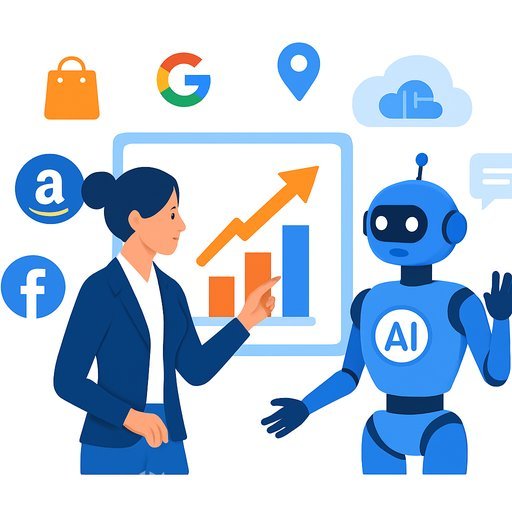AI customer service: Transforming support
Customer expectations are clear: instant, always-on help that feels personal. With advances in AI, support teams can meet that bar without scaling headcount linearly. Analysts expect AI to handle the majority of routine interactions this decade, while human agents focus on high-value work.
This is not just automation. It's a shift in how support operates: faster resolution, consistent quality, and data-driven improvement across every channel.
What is AI in customer service?
AI in support uses natural language processing, machine learning, and analytics to understand requests, suggest or deliver answers, and continuously improve. It plugs into your CRM, knowledge base, and ticketing system to resolve issues, route edge cases, and brief agents with context.
Core capabilities that matter
- Natural language processing: Understands intent across chat, email, voice, and in-app messages.
- Machine learning: Spots patterns, predicts next best actions, and learns from outcomes.
- Sentiment analysis: Detects frustration or urgency to adapt tone and prioritize.
- Intelligent routing: Directs complex issues to the right queue or specialist with full context.
Where AI delivers value by industry
- Retail and eCommerce: Product discovery, order status, returns/exchanges, and personalized recommendations.
- Healthcare: Appointment scheduling, medication reminders, FAQs about coverage and preparation.
- Financial services: Balance and transaction queries, fraud alerts, onboarding steps, loan application guidance.
In each case, AI acts as the first touch, trims wait times, and frees agents to handle sensitive or complex cases.
Why AI is transforming support
Operational gains
- Handle thousands of parallel conversations without adding shifts.
- 24/7 availability, including weekends and holidays.
- Instant answers from verified knowledge, no queue delays.
- Stable service levels during traffic spikes.
Strategic advantages
- Full interaction history to spot trends and fix root causes.
- Personalized responses using preferences and past purchases.
- Consistent answers across channels and regions.
- Proactive outreach to prevent issues before they escalate.
How to implement AI in customer service
- Step 1: Assess and set goals. Map top contact drivers, intents, and volumes. Define clear targets such as deflection rate, CSAT lift, or reduced average handle time.
- Step 2: Choose the right technology. Evaluate scalability, data controls, language coverage, and integrations with CRM, telephony, and help desk. Prioritize vendors that support your security and audit needs.
- Step 3: Prepare your data. Clean and structure tickets, macros, FAQs, and knowledge articles. Label intents and outcomes. Remove outdated content and flag compliance-sensitive material.
- Step 4: Integrate with your stack. Connect to CRM, knowledge base, ticketing, and identity systems. Enable handoff with full transcript and context when escalation is needed.
- Step 5: Test and train your team. Run controlled pilots with real traffic. Create clear playbooks for agent-AI collaboration, including when to take over and how to provide feedback.
- Step 6: Monitor and improve. Track performance daily, retrain models with fresh data, and tighten prompts and guardrails. Expand use cases once quality stays above your thresholds.
Metrics that prove impact
- Containment/deflection rate: % of issues resolved without human intervention.
- First contact resolution (FCR): Resolved in one interaction, human or automated.
- CSAT/CES: Satisfaction and effort scores for AI-handled vs. human-handled cases.
- AHT and time to first response: Speed improvements for agents and self-serve.
- Quality and compliance: Accuracy of answers, policy adherence, and audit pass rate.
- Escalation rate and reasons: What still needs a human, and why.
Risks to manage (and how)
- Incorrect or outdated answers: Use retrieval from a single source of truth, version control your knowledge base, and require citations for complex responses.
- Bias and tone issues: Apply supervised review, sentiment checks, and red-team tests on sensitive topics.
- Privacy and security: Limit data retention, mask PII, and align with your legal and audit standards. Consider frameworks such as the NIST AI Risk Management Framework.
- Over-automation: Define clear escalation triggers (sentiment, value, VIP status, risk) and make human help easy to reach.
The future of AI in support
- More natural, context-aware conversations across long threads and multiple systems.
- Issue prevention through proactive alerts, status updates, and guided workflows.
- Unified experiences across chat, email, voice, and social with shared memory.
- Emotion-aware responses that adapt tone and pacing while respecting brand voice.
Expect a blur between assisted and automated service: customers get accurate, one-to-one help regardless of channel or complexity, and agents spend their time where it counts.
Final takeaway
AI in customer service is a practical path to faster responses, lower costs, and better experiences. Start with your top contact drivers, integrate tightly with your tools, measure relentlessly, and keep humans in the loop for the edge cases that define your brand.
Build your team's AI skills
If you're planning a rollout or expanding your AI playbook, explore curated learning paths for support roles at Complete AI Training.
Your membership also unlocks:





